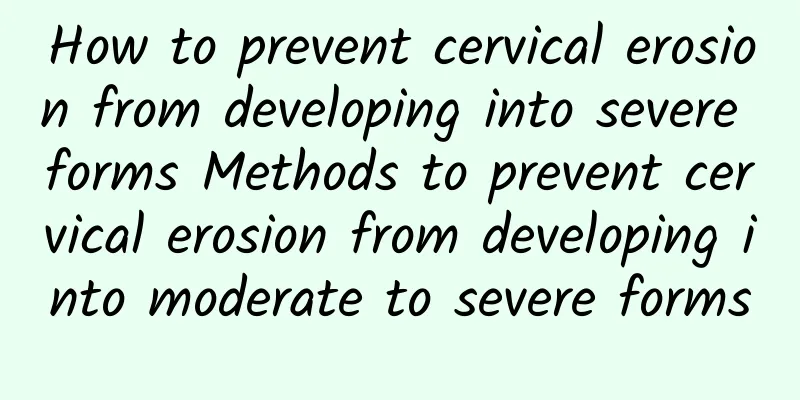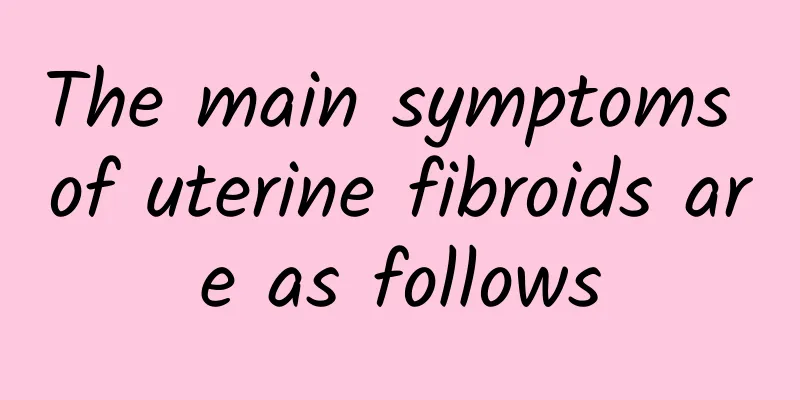What preparations are needed before uterine fibroid surgery? People with high risk of uterine fibroids

|
Most uterine fibroids are asymptomatic, and a few may present with vaginal bleeding, abdominal tumors, and compression symptoms. So, what is the preparation for uterine fibroid surgery? The age of onset is usually 35 years old among women, and about 20% of them suffer from uterine fibroids. However, because the tumor develops slowly and there are no clinical symptoms, in some cases, the disease is accidentally discovered during a physical examination, so most people do not receive earlier treatment or even no treatment. The following are the things to do before preparing for uterine fibroid surgery: 1. Ultrasound examination: B-ultrasound examination is a common method for diagnosing uterine fibroids, and the accuracy of fibroid identification can reach 93.1%. Ultrasound examination shows that the uterus is enlarged and irregular in shape; the number, location, size of fibroids, whether the fibroids are uniform or liquefied cysts; and whether there is compression of other organs around. 2. Uterine probe examination: Use a probe to measure the uterine cavity. Intramural fibroids or submucosal fibroids often enlarge and deform the uterine cavity. The uterine probe can be used to detect the size and direction of the uterine cavity. Comparing it with the findings in biphasic clinic can help determine the nature of the mass. At the same time, it can be used to understand whether there is a mass in the cavity and its location. 3. Plain X-ray examination: When the tumor is calcified, it appears as scattered uniform spots, or a shell-like calcified capsule, or a rough, wavy, honeycomb-like edge. 4. Diagnostic curettage: Small submucosal fibroids or dysfunctional uterine bleeding, endometrial polyps are not easy to be found through biphasic diagnosis, and can be assisted by curettage. If it is a submucosal fibroid, the scraper feels the uterine cavity bulge, starts high and then slides, or feels something sliding in the uterine cavity. However, small submucosal fibroids are easy to slide and missed, which is the shortcoming of diagnostic curettage. 5. Hysterosalpingography: Ideal hysterosalpingography can not only show the number and size of submucosal fibroids, but also locate them. Therefore, it is very helpful for the early diagnosis of submucosal fibroids, and the method is simple. Photography of the fibroid site shows that the uterine cavity is incomplete. |
>>: How to perform surgery for uterine fibroids? Postoperative care measures for uterine fibroids
Recommend
There are several ways bacterial vaginosis is transmitted
Everyone should know about bacterial vaginosis. O...
Health knowledge: Three reasons why women's private parts have strong odor
It is very embarrassing to smell the odor from yo...
Why does cervical erosion recur?
Why does cervical erosion recur? Cervical erosion...
Experts tell you: The horror of ectopic pregnancy!
Ectopic pregnancy is a very scary disease. It is ...
History of pelvic inflammatory disease, leucorrhea is always white, what should I do?
History of pelvic inflammatory disease, leucorrhe...
Specific description of the symptoms of cervical erosion
The symptoms of cervical erosion have a lot of im...
American beef storm! New Taipei City Health Bureau inspects 70 more stores
After a well-known steakhouse was found to use Am...
Patients should always pay attention to daily precautions for cervical hypertrophy
Suffering from cervical hypertrophy will bring gr...
Symptomatic hyperprolactinemia
Hyperprolactinemia, also known as hyperprolactine...
3CMX2CM Is pelvic effusion serious?
Pelvic effusion of three centimeters by two centi...
How much does it cost to cure threatened abortion?
In the early stages of pregnancy, due to accident...
What are the diagnostic tests for uterine fibroids?
Uterine fibroids are a common gynecological disea...
Will my period be abnormal if I take birth control pills?
Whether taking birth control pills will affect me...
How to eat healthy breakfast for weight loss? 9 superfood combinations to make a non-fat diet
How should you eat breakfast if you want to lose ...
What is the best way to eliminate uterine fibroids? What foods are there to eliminate uterine fibroids?
What is a good way to eliminate uterine fibroids?...









